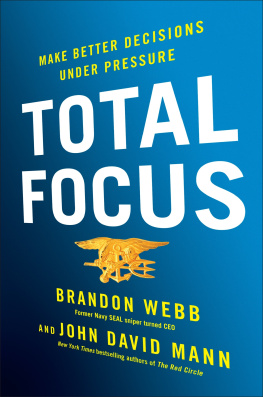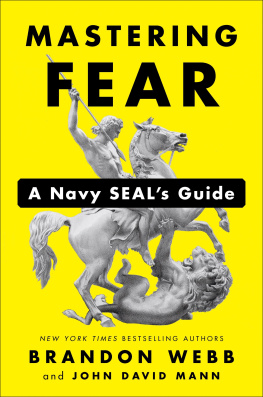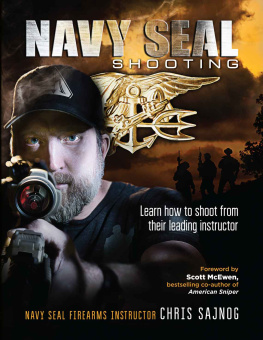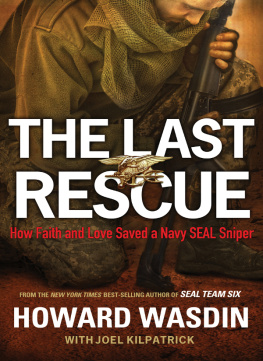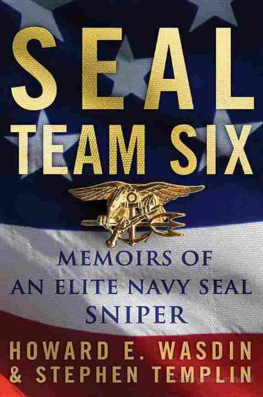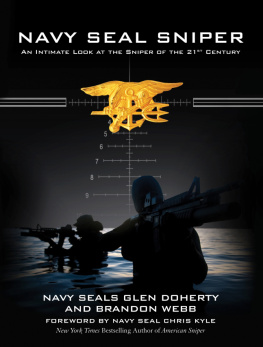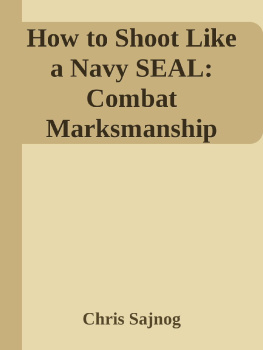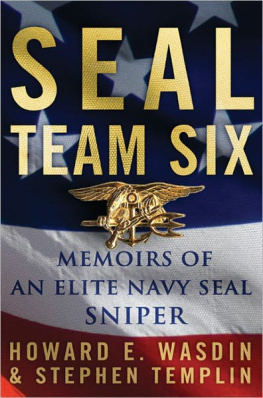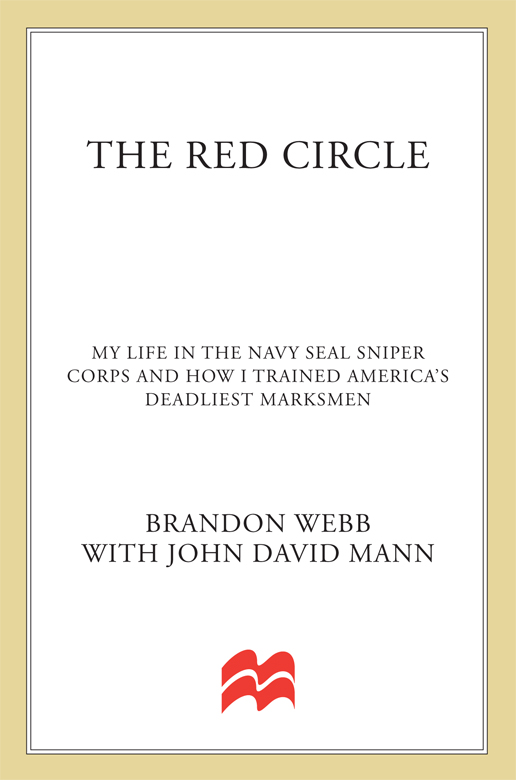
For my three children
AUTHORS NOTE
All the events in this book are true and are described herein to the best of my recollection; however, some details have been altered. With the exception of historical figures (e.g., Admiral Bob Harward, President George W. Bush, Harmid Karzai), close friends, and fallen comrades, I have changed most of the names; in some instances I have provided only the first names of friends who are still on active duty. Some dates, locations, and particulars of certain operations have been modified; and I have at all times sought to avoid disclosing methods and other sensitive mission-related information.
CONTENTS
FOREWORD
I first met Brandon Webb when I was a student in the Naval Special Warfare Sniper Course.
Sniper school was one of the toughest things Ive ever done, in some ways even more difficult than the infamous ordeal known as BUD/S, or Basic Underwater Demolition/SEAL training, that every SEAL undergoes. The sniper course starts with a stalking phase, which is all about stealth and concealment, training us to crawl painstaking inches and yards undetected across enemy-held territory. I have to be honest: This was not easy for me. The shooting part came naturally. The stalking part did not. Im a pretty big guy, and trying to make myself look like an ice plant or manzanita bush instead of a six-foot Texan it just wasnt happening. I dont know how I would have gotten through it, if it werent for Brandon being my instructor.
Brandon and his cadre were incredibly tough on us. They were intent on making us some of the best Special Operations forces in the field, and I have to admit: In that they succeeded. As I say in my book, Brandons standards were so high they would have made an Apache scout gasp. It wasnt just a matter of making our lives hard. Brandon went beyond the call. He set aside time after course hours to answer questions and work with all the students; he mentored me, did whatever it took to make sure I knew my stuff.
Graduating sniper school was one of the proudest achievements of my life.
I went from sniper school almost directly to Afghanistan. Not too many months after being under Brandons care I found myself in the soaring Hindu Kush mountains, a subrange of the Himalayas, not far from the Afghanistan-Pakistan border on June 29, 2005. Everyone else in my recon team was gone, including my brother Morgans best friend, Matt Axe Axelsonall killed by the same couple hundred Taliban forces who were now doing their level best to kill me, too. If it had not been for Brandons patience, care, and skill with me in the sniper course not long before, I can promise you this: I would have left these Texan bones bleaching on the Afghan hillside.
My story, the story of Operation Redwing and the brave men who gave their lives in the battle for Murphys Ridge, is chronicled in the pages of the book Lone Survivor. Brandons story is chronicled here in the pages you hold in your hands. And its about time. His training saved my life then, just as it would again several years later in a very different environment, fighting house to house on the hot, muggy streets of Iraq.
And I know Im not the only one. There are a lot of people out there, people whose names youll never hear, who are alive today because of the efforts, skill, and dedication of Brandon and others like him. What youre about to read is not just the story of the making of a Navy SEAL sniper but the story of one guy who went on to help shape the lives of hundreds of elite Special Operations warriors.
It was a great honor to serve on and off the battlefield with the men of the U.S. Navy SEAL teams and U.S. SOCOM (Special Operations Command). Brandon and I have both lost many great friends over the years, and its comforting to know that the memories of these great warriors will live on in the stories we share with you. My hope is that you will come to know them as intimately as we did, and that you continue to pass on their stories of heroism so that we may never forget the ultimate sacrifice they made for the freedom we enjoy today.
Brandon has a great story to tell, and it is living proof that you can achieve anything you put your mind to. Its an honor to introduce his memoir.
Never quit.
Marcus Luttrell (USN Ret.), Navy SEAL and No. 1 national bestselling author of Lone Survivor
INTRODUCTION
Four of usCassidy, Osman, Brad, and Iwent out before dawn to patrol a site where a C-130 gunship had engaged some forces the night before, to see if we could find any bodies. We reached the coordinates wed been given just moments before the indistinct grays of predawn resolved into the pastels of daybreak. Before we could do any serious searching, we heard voices coming from some nearby caves above us. The four of us instantly hit the ground and waited. As we watched, a spill of enemy fighters started pouring out of one of the cavestwenty, at least, and all armed.
If this were happening in the movies, we would all just leap to our feet and blow these guys away, but in real life it doesnt work that way. We were outnumbered at least five to one, and we were not exactly armed with machine guns. This was not the OK Corral, and if we leapt to our feet we would all be mowed down in short order. There was no hiding until they were gone, either: These guys were headed our way. We would have to call in an air strike, and do it fast.
There was a B-52 nearby; Brad got it on the radio. It was my job to give him the coordinatesbut there was a snag. The only way to ensure that the team in the B-52 dropped their fireworks on the other guys and not on us was to give them exact coordinates. Typically we would do this using a high-powered laser range finder hooked into a GPS so that when it ranged the target it would give us not only distance but also the targets GPS coordinates, which we could then pass on up to whoever we were calling for air support. These bombers are extremely accurate with their ordnance, like vertical snipers in the sky.
Wed only planned for a simple twelve-hour mission and didnt have all our usual equipment. Typically, for a full-on recon mission, Id have at least a good sniper rifle. We didnt have even a decent range finder.
Training, training. As a SEAL sniper Id been taught to estimate distances on the fly even without all the usual tools, using only my five senses and my gut, but typically Id be shooting a 10-gram bullet from the muzzle of a rifle. In this case, we were shooting a 1,000-pound bullet out of a 125-ton aircraft, flying 20,000 feet above us at near the speed of sound, at a target less than 500 yards away from where we satand I had to get it right.
Range estimation. This was something else we covered in sniper school: You visualize a familiar distance, say, a football field. Thats one football field, two football fields, three football fields but this can be risky when youre not on level ground. Here I had to sight up a rugged, rocky incline. And daybreak lighting can play tricks with distances.
Those twenty-plus al Qaeda, or Taliban, or who the hell knew who, were trickling down the slope heading straight for our position. They hadnt seen us yet, but it would be only seconds before they did. If we were going to do this thing, it had to be now .
Brandon! Cassidy hissed. You need to Kentucky-windage this drop! Kentucky windage is a term that means basically this: Wing it. Give it your best shot. I gave Cassidy a bearing I estimated as 100 meters past the group. If I was going to be off at all, better to guess long than short, and if I was balls-on accurate, a drop 100 meters behind them should at least buy us a few seconds to adjust and drop a second time.


